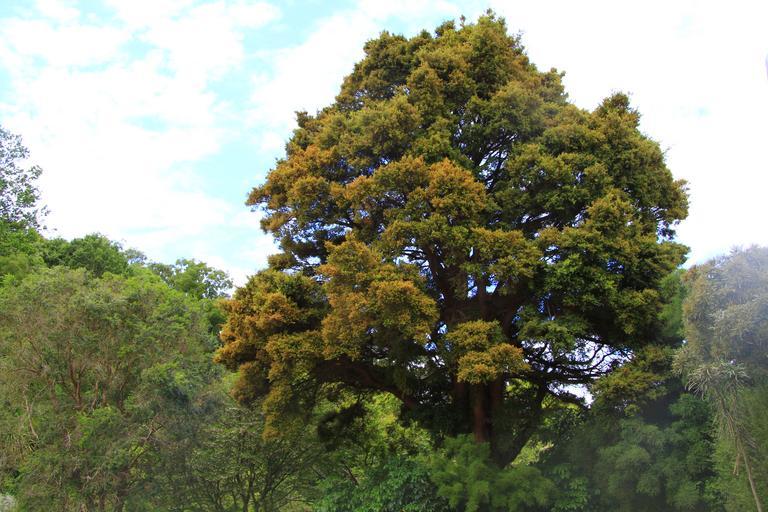MAKE A MEME
View Large Image

| View Original: | IMG_1776.jpg (5184x3456) | |||
| Download: | Original | Medium | Small | Thumb |
| Courtesy of: | www.flickr.com | More Like This | ||
| Keywords: outdoor Podocarpus totara is a species of podocarp tree endemic to New Zealand. It grows throughout the North Island and northeastern South Island in lowland, montane and lower subalpine forest at elevations of up to 600 m. Tōtara is commonly found in lowland areas where the soil is fertile and well drained. The tōtara is a medium to large tree which grows slowly to around 20 to 25 m, exceptionally to 35 m; it is noted for its longevity and the great girth of its trunk. The bark peels off in papery flakes, with a purplish to golden brown hue. The sharp, dull green needle-like leaves are stiff and leathery, 2 cm long. This plant produces highly modified cones with 2 to 4 fused, fleshy berry-like juicy scales, bright red when mature. The cone contains one or two rounded seeds at the apex of the scales. The largest known living tōtara, the Pouakani Tree, near Pureora in the central North Island is over 35 meters tall and nearly 4 meters in trunk diameter at breast height. Podocarpus totara is a species of podocarp tree endemic to New Zealand. It grows throughout the North Island and northeastern South Island in lowland, montane and lower subalpine forest at elevations of up to 600 m. Tōtara is commonly found in lowland areas where the soil is fertile and well drained. The tōtara is a medium to large tree which grows slowly to around 20 to 25 m, exceptionally to 35 m; it is noted for its longevity and the great girth of its trunk. The bark peels off in papery flakes, with a purplish to golden brown hue. The sharp, dull green needle-like leaves are stiff and leathery, 2 cm long. This plant produces highly modified cones with 2 to 4 fused, fleshy berry-like juicy scales, bright red when mature. The cone contains one or two rounded seeds at the apex of the scales. The largest known living tōtara, the Pouakani Tree, near Pureora in the central North Island is over 35 meters tall and nearly 4 meters in trunk diameter at breast height. | ||||